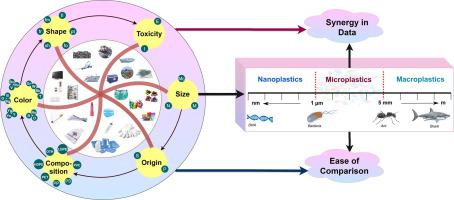Gondwana Research ( IF 6.1 ) Pub Date : 2021-07-14 , DOI: 10.1016/j.gr.2021.07.004 Mu. Ramkumar 1 , K. Balasubramani 2 , M. Santosh 3, 4 , R. Nagarajan 5

|
Plastics are synthetic polymers that are extensively used in the modern world, and subsequently abandoned causing severe challenges and destruction to the natural environment. Though initially considered as synthetic replacements to finite natural materials, these have become serious pollutants in every sphere of the Earth, and earning the dubious distinction as a marker of the Anthropogenic Epoch. With approximately 50 basic types of polymers and about 60,000 plastic formulations available in the market and an estimated increase in the annual production rate of 8%, the plastic pollution has become a menace that needs to be documented and addressed properly with an urgent need to formulate strategies for management and mitigation. Accordingly, there has been a great boom recently in the studies related to plastic pollution covering different branches of oceanography, chemical engineering, glaciology, environmental geology, ecotoxicology, biology, agriculture and policy, among others. These attempts place severe constraints on the type, nature and quantum of sample collection, processing, analytical protocols, and units of data reporting etc. Several studies have highlighted the inconsistencies and constraints in comparing and replicating the data and results. In this paper, we address the commonly studied and environmentally important parameters of plastics, such as size, origin, polymer composition, color, shape and toxicity potential and incorporate these into a structured morphometric genetic classification. With the help of notations/codes for each of the subcategories and the generation of quantitative data for these parameters, our classification is aimed to provide a novel and integrated approach to unifying the various aspects of the planet’s ‘plastisphere’. This approach can help in alleviating some of the problems of inconsistencies in investigating and reporting data and in comparing different studies from various regions across the globe.
中文翻译:

塑料圈:自然环境中塑料污染物的形态计量遗传分类
塑料是现代世界中广泛使用的合成聚合物,随后被废弃,对自然环境造成严重挑战和破坏。虽然最初被认为是有限天然材料的合成替代品,但它们已成为地球各个领域的严重污染物,并赢得了作为人类起源时代标志的可疑区别。市场上有大约 50 种基本类型的聚合物和大约 60,000 种塑料配方,预计年产量将增加 8%,塑料污染已成为需要记录和妥善解决的威胁,迫切需要制定管理和缓解策略。因此,最近,与塑料污染相关的研究蓬勃发展,涵盖海洋学、化学工程、冰川学、环境地质学、生态毒理学、生物学、农业和政策等不同分支。这些尝试对样本收集、处理、分析协议和数据报告单位等的类型、性质和数量施加了严格的限制。一些研究强调了比较和复制数据和结果的不一致和限制。在本文中,我们解决了塑料的常用研究和环境重要参数,例如尺寸、来源、聚合物成分、颜色、形状和毒性潜力,并将这些纳入结构化的形态测量遗传分类中。借助每个子类别的符号/代码以及这些参数的定量数据的生成,我们的分类旨在提供一种新颖的综合方法来统一地球“塑料圈”的各个方面。这种方法有助于缓解调查和报告数据以及比较来自全球不同地区的不同研究时存在的一些不一致问题。



























 京公网安备 11010802027423号
京公网安备 11010802027423号